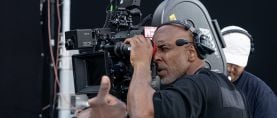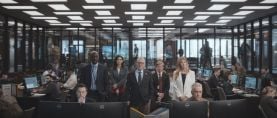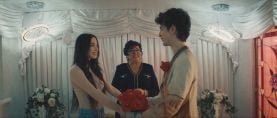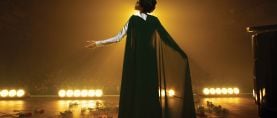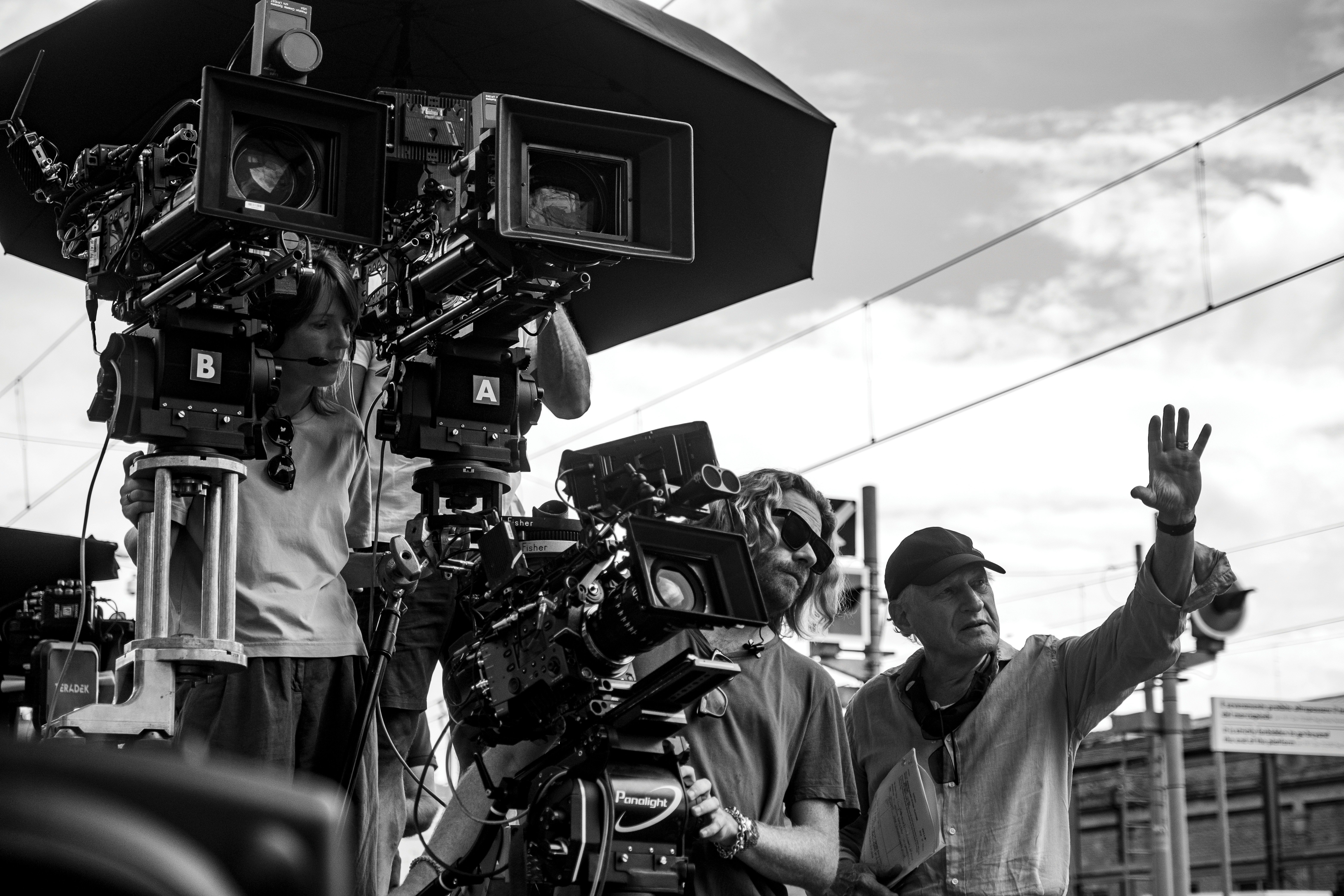
Race Opera: Ferrari
Director Michael Mann shares how he and Erik Messerschmidt, ASC explored the grandiosity and humanity of Enzo Ferrari.
American Cinematographer: This project was in development for a long time, through different directors and casts. How did you approach narrowing the focus of the story?
Michael Mann: When [potential director] Sydney Pollack and I got together on it around 2000, there was the idea of [focusing on] these three months in the spring of 1957. In the intensity of those months, you can explore a fractal [of] Enzo’s whole life. All the conflicts are contained in this crucible of these operatic events of 1957 — his revelation to his wife, Laura, that he’s had another family for 12 years with another woman, as he and Laura are still reeling from the death of their son, Dino. Conflicts we may see neatly resolved in movies don’t neatly resolve in life; we wind up going to our grave with the contradictions intact. There’s also the story of the factory that they’ve built from nothing since 1947. It’s now 10 years later, and everybody’s competing for a seat in a Ferrari. But at the same time, racing in that period is so unbelievably dangerous. Half of the racing team from 1956 to 1958 was dead by the end of ’58.
There is always the near presence of sudden death, as in the demise of test driver Castellotti, which was witnessed by a fellow driver.
They have all made a bargain with this — ‘It’ll never happen to me.’ Until it happens to one of our friends, then we give it up forever on Sunday, then we’re back practicing by Wednesday, and we’re back on the track the next Sunday. The driver [who witnessed the crash], Jean Behra, was stopped on the road next to the Autodromo di Modena. [Castellotti] hit it too fast and the car was out of control, just exactly what we shot in the movie. You have a medium shot, and you see that car and see what happens. You don’t interfere with the objective reality of the horror of it with nifty camerawork, nifty compositions, lots of cuts. You know, there’s a million ways you could shoot that, but I wanted it to feel as neutrally observed as possible — a very pedestrian camera angle with no cuts. We [did] a lot of testing to get a projected car to do what we wanted. All the pieces of that car in the air are not CGI. That’s all real.
“I’ve always liked very aggressively making something look like something for a reason.”
— Michael Mann
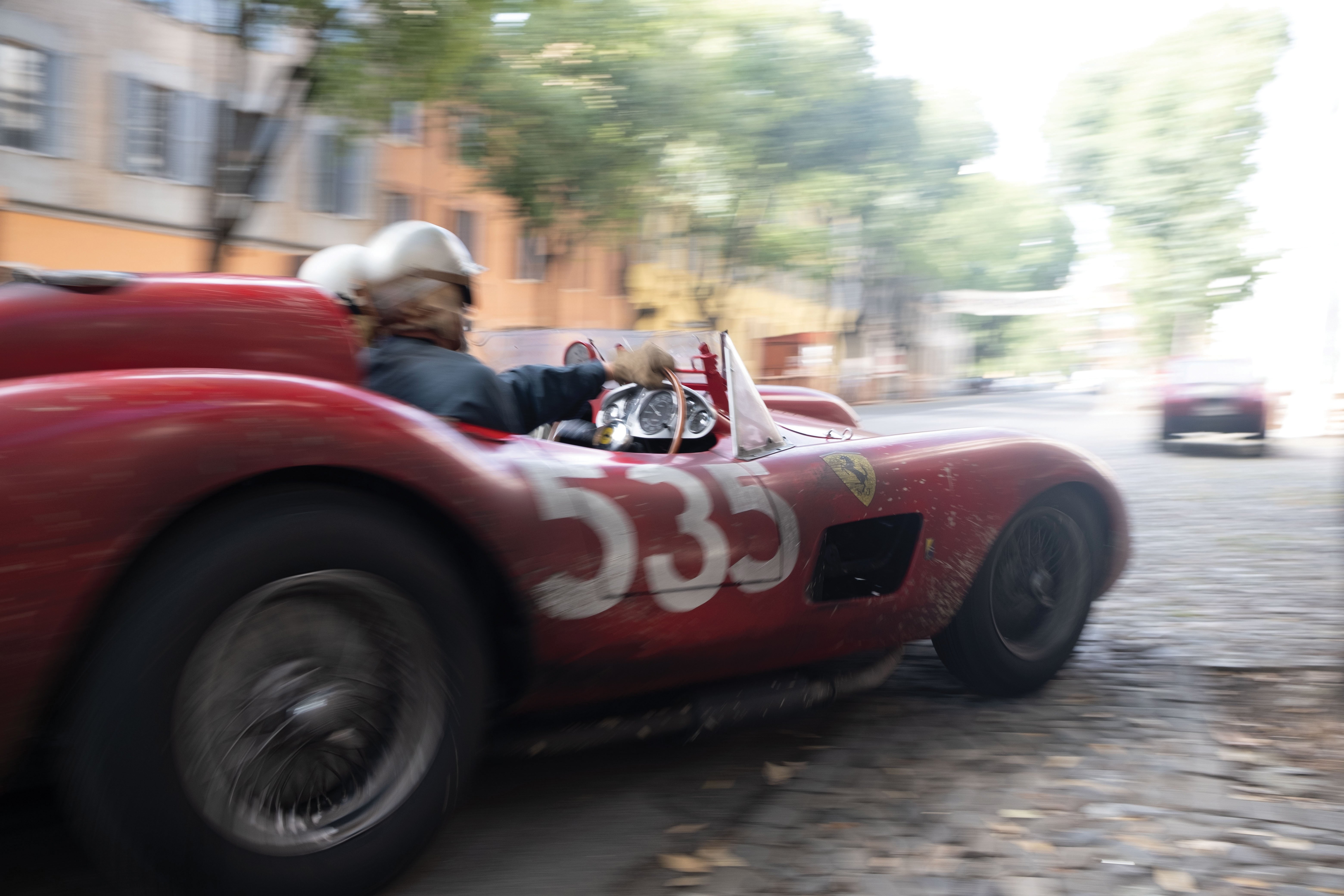
What do you appreciate about Erik Messerschmidt, ASC’s approach to cinematography?
I love Erik’s lighting because he really lights — [he’s] very proactive. I’m not a fan of the strange style that started to show up about six years ago of passive illumination, as if there’s some virtue in not being artistically expressive. I’ve always liked very aggressively making something look like something for a reason. Erik was a gaffer, and he’s spectacularly confident with moving lights and achieves things in 20 minutes. He and I had a very specific approach to how light works in the film, which is much like the way it works in a Caravaggio painting. It’s dramatic because — Erik was terrific doing this — the light has its own mind, and people move in and out of it. In a very subliminal way, the believability is increased. It’s not theatrically designed from shot to shot, or setup to setup, to a preconceived notion, which to me is a false way of thinking about it. In the scene where Enzo and Laura argue, the lights are in a room the characters really move through.
The moody interiors are a striking contrast to the vivid racing action.
I wanted the scenes between people to be monochromatic and dark and more-or-less conventional, with static cameras and a certain stateliness — the actors are performing, and the dynamics are happening within that frame. The cars are shot in exactly an opposite way. That’s the only time you see that vivid red, and the cars are slashing through the frame; there’s a lot of agitation, a lot of camera movement. The camerawork, along with the sound, is very expressive of the internal experience of racing. Some of the stuff was handheld, right up into people’s faces. The idea was to feel you’re in the car. The most innovative technology we used had to do with how the cameras were mounted. Buried within replica cars, we built in a tubular chassis with hard mounts for where I thought I might place cameras. We had a rail — say, from the right rear wheel for the low-down shots all the way up the side of the car to the fender above the right front wheel. It’s electronically controlled, and we were able to [move the camera on the rail via a remotely operated slider] and run the car at about 110 miles an hour while that was happening.
You'll find our complete story on shooting Ferrari in our January 2024 issue.
